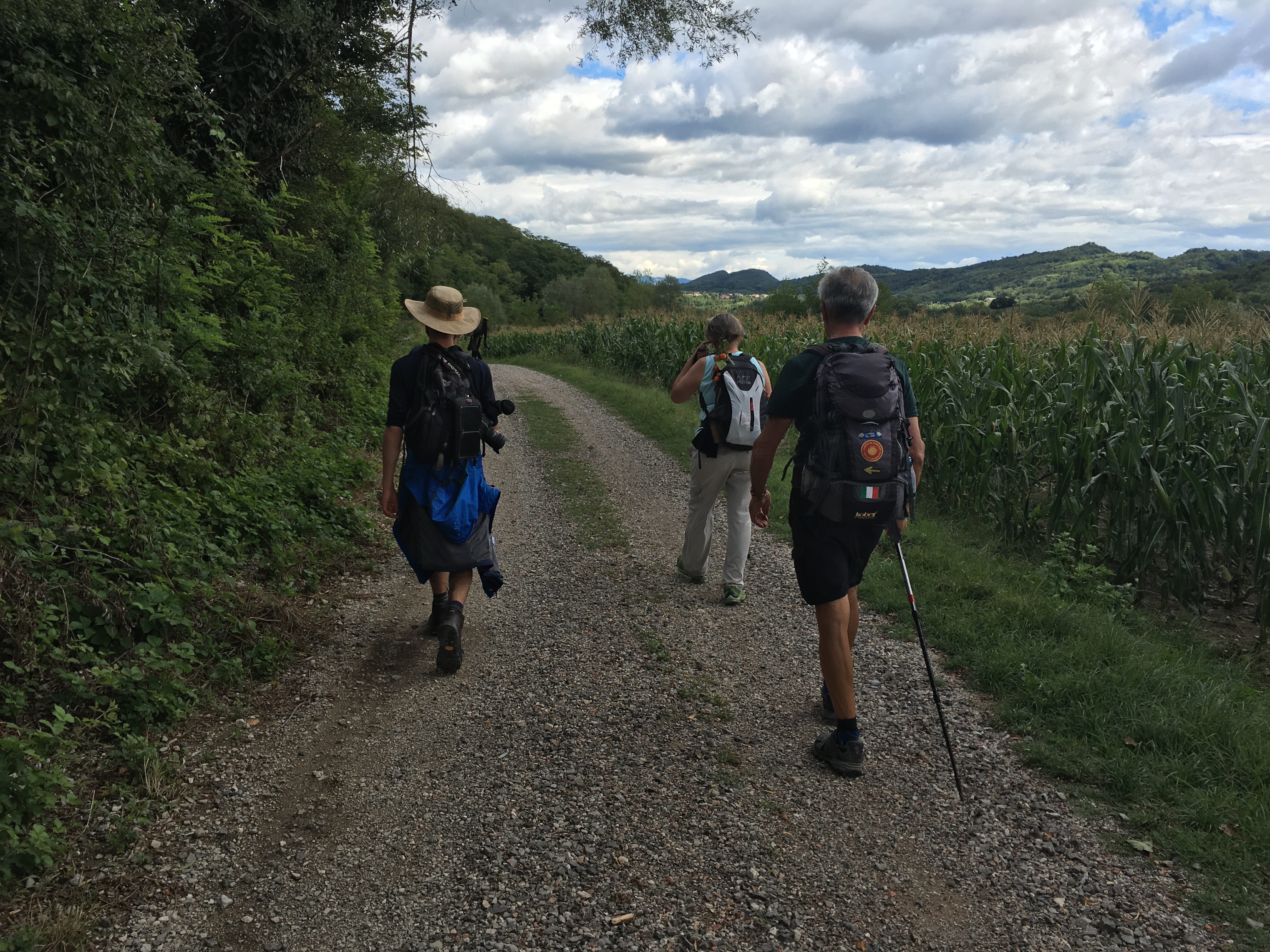Listen to the travelogue (in Italian): http://radiofrancigena.com/podcast/da-aquileia-a-belgrado-sara-zanni/
Today we crossed several walls and had some pleasant unattended encounters. First, we broke the wall of the 30km, since we’ve walked 35km: it was a psychological barrier, but not less important. Second wall: the Border between Italy and Slovenia… once it was much more difficult to cross… but we are already in the second of the five countries where we are supposed to be walking. Third, we crossed the line where once stood the Iron Courtain. And this was a symbolic and historical wall.
Then, we met some interesting people: already at the beginning, in Savogna d’Isonzo, we finally met Ivanka e Zdenka, two Slovenian friends who wanted to walk with us from Aquileia for several days. But yesterday we had a misunderstanding and we didn’t meet them. This morning we were on time and we met at the church: it was a very good thing and I must thank our common friend, Zdenko for making the connection. They told us a lot of things about the modern history of the places where we have been today and helped us finding a more comfortable path, avoiding the main roads and walking in the woods and along the Vipacco river. Thanks to them, we visited the cemetery of Miren, that from 1947 to 1974 was crossed by the Iron Curtain. Even if the village was entirely Slovenian, the graveyard was for one third in the Italian territory and for the remaining was left in Slovenia. It was forbidden to bury the deads in the Italian part and even to visit family graves that already were placed there. Nevertheless, the check point at the border near the cemetery was very easy to pass and many people coming from sovietic countries tried their fortune here. Many failed dramatically and, in their memory and not to forget the nonsense of a border that culturally never existed here, a small museum was opened in the graveyard and is dedicated to the refugees.
After Miren, we kept walking and came to the town of Belije, where we can probably locate the Roman Ad fornulus, still rich in clay. There was the village feast and we were kindly invited to share some refreshments with the volunteers preparing the party. This is one of the unattended events that make walking journeys interesting: meeting people and sharing nice moments only because it is nice to be together. Later, we met Riccardo Cecovini, young researcher in medieval history at Università di Trieste, who recently finished his Ph.D. about the via from Aquileia to Emona. He was so kind to walk with us for several km and to explain to us the results of his research. It was very interesting to figure out the path of the road, looking from above to the plain of the Vipacco.
After this meeting, we crossed some other woods and fields and we had a chance to test our rain coats for the first time in this journey: a nice rain refreshed the air and let us understand, as Roberto stated, that here there is a special kind of drops: not “gocce” but “goccioloni”, that make you wet in less than a breath.
Following the railway, and passing near to the site of the mansio fluvio frigido and to the remains of the castra, we finally arrived at the youth hostel and we’re ready to enjoy the well earned rest.
















Hi, the village near ad fornulus is Bilje. :). Im sorry that i didnt get to walk with you. From savognia ad on beacuse im from Bilje and will have a lot of questions about that road thru ad fornulus Im passionate of rome history. By afn good save walk.
LikeLike